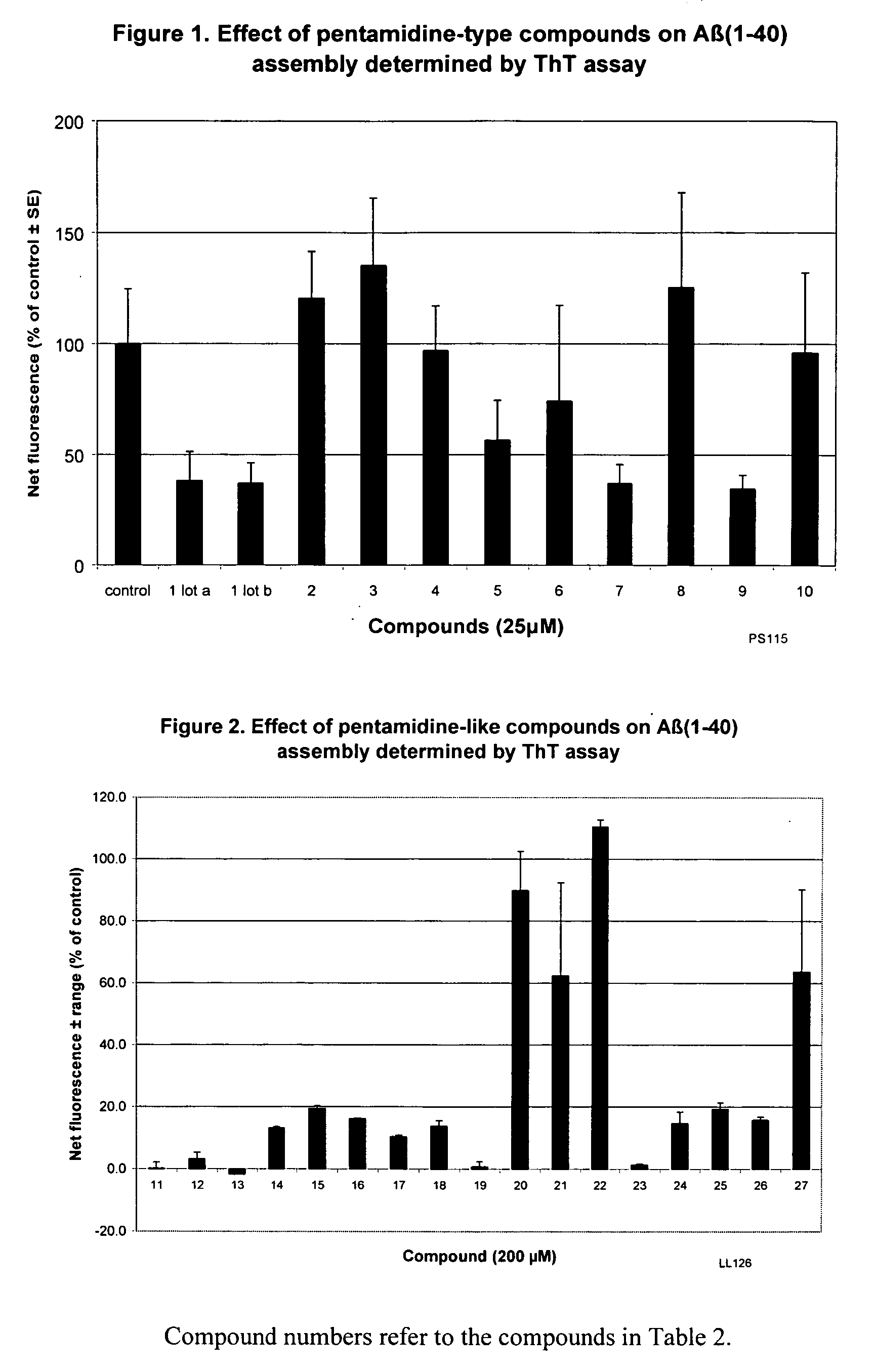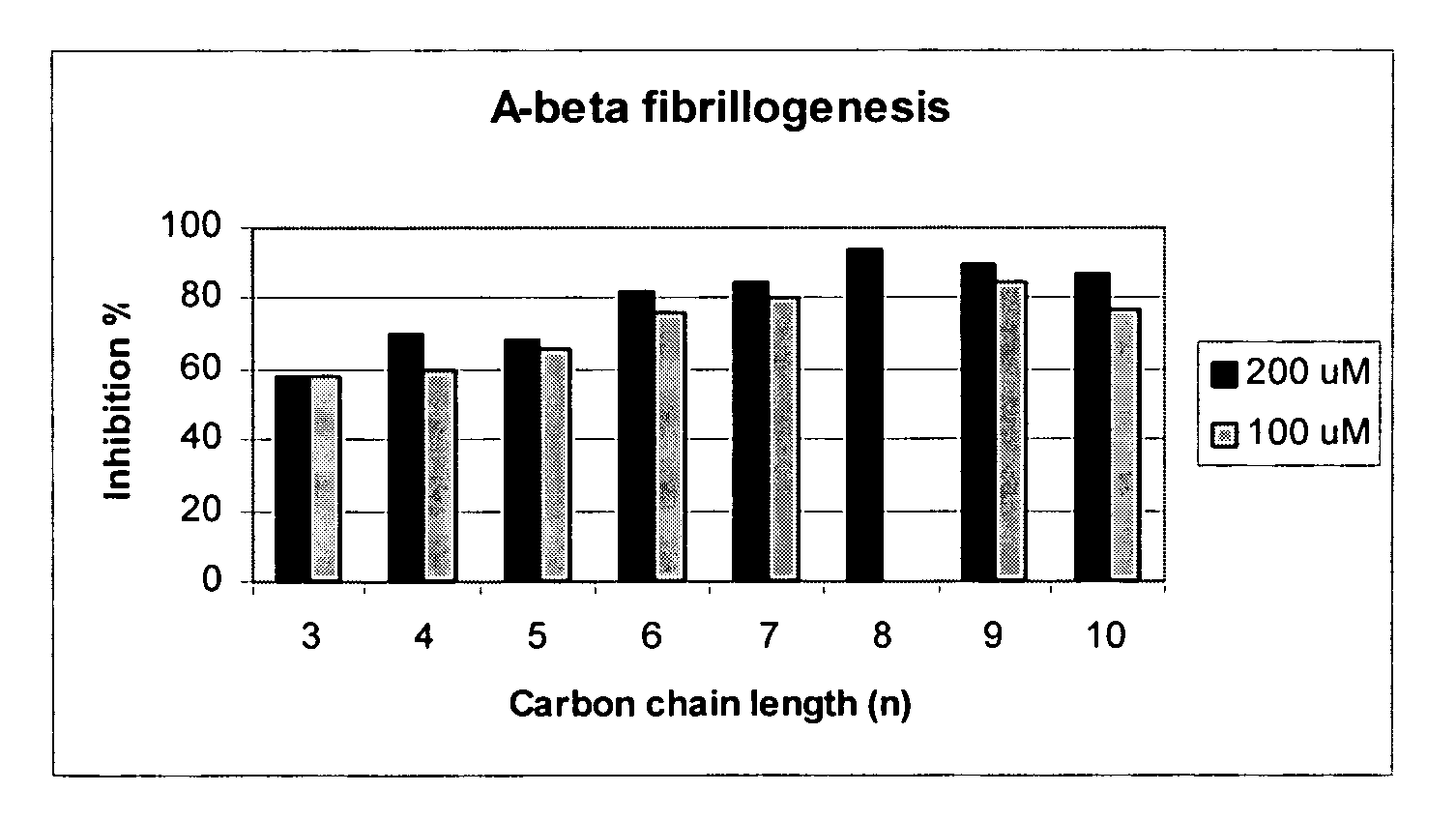Amidine derivatives for treating amyloidosis
a technology of amyloidosis and amyloid derivatives, which is applied in the field of pathological conditions, can solve the problems of inability to prevent or cure disease, inability to and inability to widely accept therapies or treatments which significantly dissolve amyloid deposits in situ
- Summary
- Abstract
- Description
- Claims
- Application Information
AI Technical Summary
Benefits of technology
Problems solved by technology
Method used
Image
Examples
examples
[0183] The synthesis of amidine compounds of the invention is described in U.S. Pat. Nos. 5,428,051, 4,963,589, 5,202,320, 5,935,982, 5,521,189, 5,686,456, 5,627,184, 5,622,955, 5,606,058, 5,668,167, 5,667,975, 6,025,398, 6,214,883, 5,817,687, 5,792,782, 5,939,440, 6,017,941, 5,972,969, 6,046,226, 6,294,565 (B1), 6,156,779, 6,326,395, 6,008,247, 6,127,554, 6,172,104, 4,940,723, 5,206,236, 5,843,980, 4,933,347, 5,668,166, 5,817,686, 5,723,495, 4,619,942, 5,792,782, 5,639,755, 5,643,935, 5,602,172, 5,594,138, and 5,578,631. Many of the compounds may also be purchased from Sigma-Aldrich Co. (Milwaukee, USA). The compounds may also be synthesized according to art-recognized techniques.
[0184] Test compounds were purchased from commercial sources or synthesized and screened by thioflavin T fluorescent assay (“ThT assay”). Alternatively, one could screen test compounds by circular dichroism (“CD”), electron microscopy (“EM”), or mass spectroscopy (“MS”) assays. The MS assay gives data on ...
PUM
| Property | Measurement | Unit |
|---|---|---|
| Mass | aaaaa | aaaaa |
| Structure | aaaaa | aaaaa |
| Molecular weight | aaaaa | aaaaa |
Abstract
Description
Claims
Application Information
 Login to View More
Login to View More - R&D
- Intellectual Property
- Life Sciences
- Materials
- Tech Scout
- Unparalleled Data Quality
- Higher Quality Content
- 60% Fewer Hallucinations
Browse by: Latest US Patents, China's latest patents, Technical Efficacy Thesaurus, Application Domain, Technology Topic, Popular Technical Reports.
© 2025 PatSnap. All rights reserved.Legal|Privacy policy|Modern Slavery Act Transparency Statement|Sitemap|About US| Contact US: help@patsnap.com



